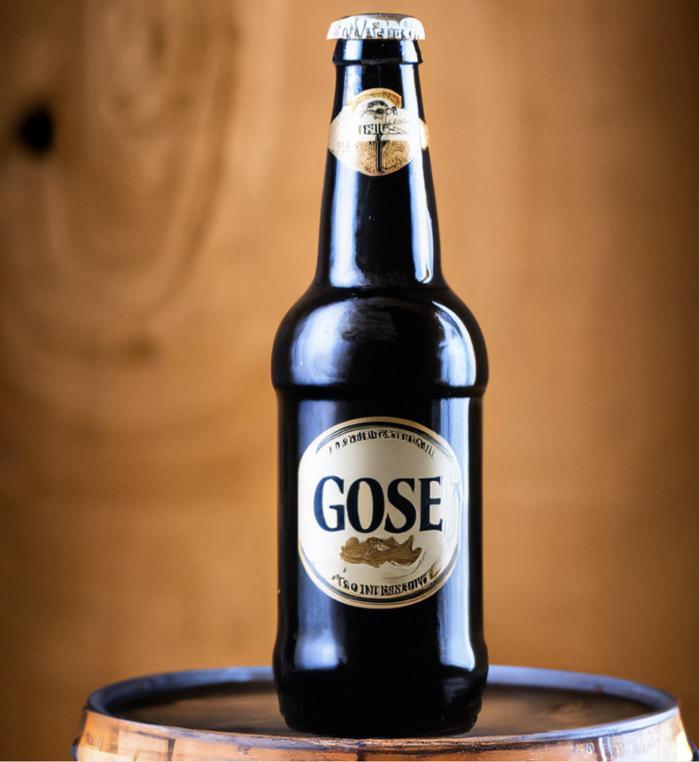When it comes to beer, there are various factors that people consider when choosing their favorite brew. Some may focus on the alcohol content, while others care more about the flavor profile.
However, one aspect that is often overlooked is the sodium content in beer. This is particularly important for those who are monitoring their sodium intake for health reasons. So, which beer has the highest sodium content? The answer is Gose.
In this blog post, we will dive into the world of Gose beer, explore its history, discuss what makes it unique, and delve into the brewing process. We will also examine the sodium content in various beer styles and provide some tips on how to enjoy Gose beer responsibly.
Salt is Added to Gose Beer
When it comes to sodium content, Gose beer stands out among other beer styles. While the exact amount of sodium can vary depending on the specific recipe and brewing process, a typical Gose can contain anywhere from 1,500 to 2,500 milligrams of sodium per liter.
In comparison, other beer styles such as lagers and pilsners have a much lower sodium content, generally ranging from 50 to 200 milligrams per liter.
Origins
Gose beer has its origins in Goslar, Germany, dating back to the 16th century. The beer was named after the Gose River, which provided the water for brewing this unique style. The river’s high mineral content, particularly in sodium and chloride, played a significant role in shaping the beer’s distinctive flavor profile.

Popularity and Decline
Gose beer gained popularity in the 18th and 19th centuries, particularly in the city of Leipzig, where it became its own distinct beer style. However, with the rise of lagers and pilsners, Gose’s popularity waned, and by the mid-20th century, it had almost disappeared from the German beer scene.
Revival
Thankfully, Gose has made a comeback in recent years, with many craft breweries around the world putting their own spin on this historic beer style. This resurgence can be attributed to the growing interest in sour beers and the desire to explore traditional brewing techniques.
Characteristics of Gose Beer
Flavor Profile
Gose beer is known for its tart, salty, and slightly fruity flavors. The use of coriander in the brewing process adds a subtle spiciness, while the addition of lactobacillus bacteria creates a pleasant sourness. The high sodium content from the brewing water contributes to the beer’s signature saltiness.
Appearance
Gose typically has a hazy, pale yellow appearance with a moderate to high level of carbonation. The head retention is generally low due to the wheat content in the grain bill.
Alcohol Content
Gose beer is a sessionable style, with an alcohol by volume (ABV) typically ranging from 4.0 to 5.0%. This makes it an ideal choice for those looking for a flavorful beer that can be enjoyed in moderation.
Brewing Process
The brewing process for Gose is unique compared to other beer styles. Here are the key elements that differentiate Gose from other brews:
Mash
Gose is brewed with a mixture of malted barley and wheat. The wheat content usually ranges from 30 to 50% of the grain bill, which contributes to the beer’s hazy appearance and enhances the mouthfeel.
Boil
Traditionally, Gose is brewed with coriander seeds and sea salt added during the boil. This not only adds flavor but also contributes to the beer’s high sodium content.
Fermentation
Gose undergoes a mixed fermentation process, which involves the use of both brewer’s yeast and lactobacillus bacteria. The bacteria produce lactic acid during fermentation, which gives Gose its characteristic tart flavor.
Sodium Content in Other Beers
Sodium can have a significant impact on the flavor of beer. In small amounts, sodium can help to enhance the sweetness and maltiness of a beer, as well as improve mouthfeel and body. However, excessive sodium levels can result in a beer that tastes overly salty or metallic.
| Beer Brand/Type | Sodium Content (mg) per 12oz |
|---|---|
| Budweiser | 10-10.6 |
| Miller Lite | 16 |
| Coors Light | 18 |
| Heineken | 11 |
| Corona | 14 |
| Guinness Draught | 11 |
| Sierra Nevada Pale Ale | 6 |
| Gose | 140-560 |
Gose is the only type of beer where salt is always added, the rest contains salt only indirectly from the other ingredients.
Health Considerations
While enjoying Gose beer in moderation is unlikely to cause major health concerns, it is essential to be mindful of sodium intake, particularly for individuals with high blood pressure or other health issues that require sodium restriction.
As always, it is important to consume alcohol responsibly and consult with a healthcare professional if you have concerns about your sodium intake.
Tips for Enjoying Gose Beer
If you’re interested in trying Gose beer, here are some tips for enjoying this unique brew:
1. Pair with food: Gose pairs well with a variety of dishes, particularly seafood, salads, and tangy cheeses, as the tart and salty flavors complement and enhance the food’s taste.
2. Serve chilled: Gose is best enjoyed at a temperature of around 45°F (7°C), which allows the beer’s refreshing qualities to shine.
3. Explore variations: Many craft breweries have created their own interpretations of Gose, incorporating unique ingredients such as fruits, spices, or herbs. This provides an excellent opportunity to explore the diverse world of Gose beer.
Conclusion
In conclusion, Gose beer is a fascinating and unique beer style that offers a refreshing and flavorful experience. With its high sodium content, it stands out among other beer styles and provides an interesting option for those looking to explore the world of sour and salty brews. As always, enjoy Gose beer responsibly and be mindful of sodium intake for a balanced and enjoyable drinking experience.
Here are 10 facts about Gose beer to remember:
1. Gose beer has the highest sodium content among all beer styles.
2. It originates from Goslar, Germany and is named after the Gose River.
3. Gose beer experienced a decline in popularity but has made a comeback in recent years.
4. The flavor profile is characterized by tart, salty, and slightly fruity flavors.
5. Gose has a hazy, pale yellow appearance with low head retention.
6. The alcohol content ranges from 4.0 to 5.0% ABV.
7. Gose is brewed with a mixture of malted barley and wheat.
8. The brewing process involves coriander seeds, sea salt, and mixed fermentation.
9. Sodium content in Gose typically ranges from 1,500 to 2,500 milligrams per liter.
10. Gose pairs well with seafood, salads, and tangy cheeses and is best enjoyed chilled.
FAQs
Are sour beers high in sodium?
Sour beers are not typically high in sodium. The primary characteristic of sour beers is their tart or acidic taste, which is achieved through the addition of specific bacteria or wild yeast strains during the fermentation process. These bacteria and yeasts produce lactic acid, acetic acid, or other organic acids that give sour beers their distinctive flavors. Sodium is not a significant component in the production of sour beers, and its levels are generally low. However, it is essential to note that the sodium content can vary depending on the specific recipe or brewing process used by individual breweries. Therefore, it is always advisable to check the label or consult the brewer for precise information regarding the sodium content of a particular sour beer.
Do sour beers have less calories?
Sour beers do not inherently have less calories than other beer styles. The calorie content of a beer is primarily determined by its alcohol and carbohydrate content. While sour beers often have a lower alcohol content compared to some other styles like IPAs or stouts, this does not necessarily mean they have fewer calories.
The sourness of a beer is typically achieved through the addition of certain bacteria or wild yeast strains during fermentation, which can produce tart or acidic flavors. These souring agents do not significantly impact the calorie content of the beer.
To accurately determine the calorie content of a sour beer, you would need to consider its specific recipe, including the types and amounts of malts, adjuncts, and sugars used. Additionally, the brewing process, such as mashing, fermentation, and conditioning, can also influence the final calorie content.
It’s worth noting that some breweries may offer low-calorie or light sour beer options, where the recipe is intentionally designed to reduce the overall calorie count. However, this is not a characteristic inherent to all sour beers.
How much sodium is in gose beer?
Gose beer typically contains a low to moderate amount of sodium. The exact amount can vary depending on the specific recipe and brewing process used by different breweries. On average, a 12-ounce (355 ml) serving of gose beer may contain around 100-200 milligrams of sodium. However, it’s important to note that sodium levels can vary significantly between different brands and variations of gose beer. Therefore, it is always advisable to check the nutrition label or contact the specific brewery for accurate sodium content information.
Does sour beer have health benefits?
Sour beer, like any alcoholic beverage, should be consumed in moderation and with awareness of its potential effects on health. While sour beer may have some health benefits, it is important to note that these benefits are primarily associated with moderate consumption and specific components found in beer rather than sourness itself.
1. Gut Health: Sour beers, particularly those made with wild yeasts and bacteria, can contain probiotics like lactobacillus and pediococcus. These beneficial bacteria may support gut health by promoting a balanced microbiome. However, the probiotic content in sour beer is generally lower compared to other fermented foods like yogurt or kefir.
2. Antioxidants: Beer, including sour beer, contains antioxidants derived from the malted barley and hops used in brewing. These antioxidants, such as polyphenols, can help reduce oxidative stress and inflammation in the body. However, the overall antioxidant content in beer is relatively low compared to other sources like fruits and vegetables.
3. Resveratrol: Some sour beers, particularly those aged in oak barrels, may contain higher levels of resveratrol. Resveratrol is a compound found in grapes and has been associated with potential heart health benefits. However, the levels of resveratrol in beer are generally lower compared to red wine.
4. Hydration: Sour beer, like any beer, is primarily composed of water and can contribute to overall hydration. However, it is important to note that alcohol consumption can also have a diuretic effect, leading to increased fluid loss.
5. Social and Psychological Benefits: Enjoying sour beer, or any alcoholic beverage, in moderation can provide social and psychological benefits. It can be a part of social gatherings, celebrations, or relaxation moments. However, it is crucial to drink responsibly and be aware of the potential risks associated with excessive alcohol consumption.
It is important to consult with a healthcare professional for personalized advice regarding alcohol consumption and its potential effects on individual health conditions or medications.
Are sour beers healthier?
Sour beers are not inherently healthier than other beer styles. While they may offer certain health benefits, it is important to note that moderation is key when consuming any alcoholic beverage. Here are a few points to consider:
1. Probiotic Potential: Some sour beers, particularly those brewed using traditional methods like spontaneous fermentation or barrel-aging, can contain live bacteria and yeast cultures. These microorganisms have the potential to provide probiotic benefits to the digestive system. However, the actual quantity and viability of probiotics in sour beers can vary significantly, and it is not a reliable source compared to purposefully cultured probiotic foods or supplements.
2. Lower Alcohol Content: Sour beers often have a lower alcohol content compared to stronger beer styles, such as IPAs or stouts. This can be advantageous for those who prefer to consume alcohol in moderation or are mindful of their alcohol intake.
3. Antioxidants: Some studies suggest that certain compounds found in beer, such as polyphenols, may have antioxidant properties. While sour beers can contain higher levels of these compounds due to the extended aging process and use of specific ingredients, the overall antioxidant content can still vary widely depending on the beer’s recipe and brewing techniques.
4. Acidity and Dental Health: Sour beers tend to have a higher acidity level due to the presence of lactic acid produced during fermentation. This acidity can potentially erode tooth enamel and contribute to dental issues if consumed excessively or without proper oral hygiene practices.
It is important to remember that the potential health benefits of sour beers should be viewed in the context of a balanced lifestyle. Regular exercise, a nutritious diet, and responsible alcohol consumption are crucial for overall well-being. If you have specific health concerns or conditions, it is always advisable to consult with a healthcare professional.
Which beer has the highest sodium?
Among popular beer brands, Gose is known to have the highest sodium content. Gose is a traditional German-style beer that is typically brewed with salt and coriander. Due to the addition of salt during the brewing process, Gose beers tend to have a higher sodium content compared to other beer styles. However, it’s important to note that the sodium levels can vary among different Gose beers and other factors such as the brewing process and ingredients used can also influence the sodium content.





